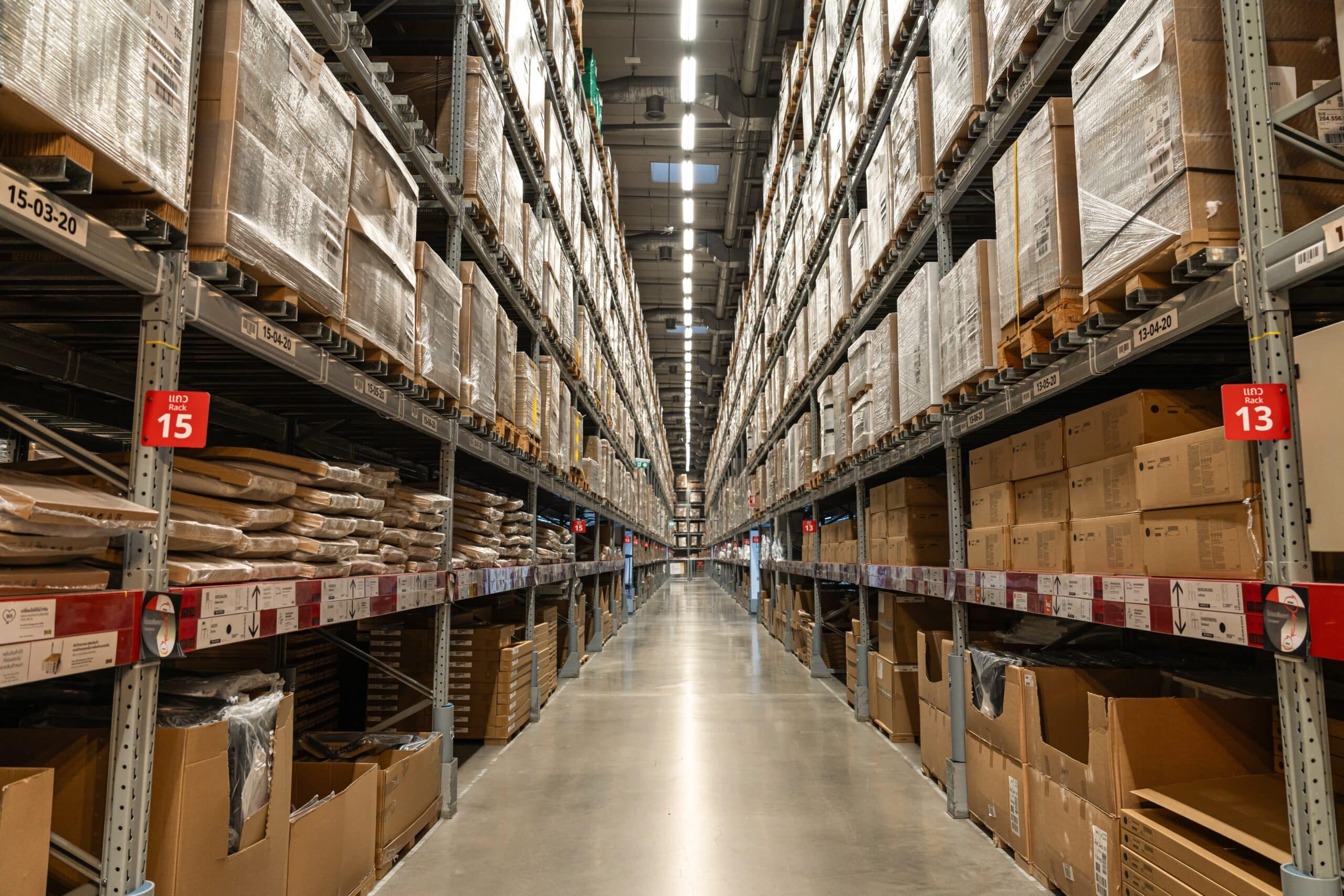Modern supply chain processes are evolving at a breakneck pace. Fueled by innovative technologies like artificial intelligence (AI) and shifting consumer trends, today’s supply chains are faster, more complex, and more volatile than previous iterations. In this ecosystem, when designing (or redesigning) your supply chain, it’s important to not only have a supply chain that’s effective today, but to have one that’s both prepared for growth and insulated from risk.
That’s where supply chain design comes into play. Too often, inventory-based businesses focus solely on efficiency, optimizing their supply chains for cost and speed. But then, when growth accelerates or a crisis hits, cracks in the system quickly become visible – and costly.
That’s why forward-thinking organizations are reimagining their supply chain design to include scalability and resilience from the ground up. This article dives into how to build a supply chain process that is suitable for today, supports future growth, and helps you navigate and withstand uncertainty.
Core Principles of Next-Generation Supply Chain Design
When it comes to supply chain design, it’s not enough to have a supply chain that just “gets the job done.” Instead of a linear, rigid, and efficiency-obsessed supply chain, forward-thinking organizations are building processes that are resilient to disruptions and capable of quickly scaling.
Here are the core principles that define this next iteration of supply chain design:
1. Proactive resilience
In the past, supply chains were designed to respond to disruptions after the fact. But in today’s climate, this approach is no longer enough. Studies show that a majority of supply chains are in a fragile state, and only about 8% are fully resilient to uncertainty or disruption. Now, you can build supply chain resilience into the process itself. This means doing things like incorporating redundancies, designing for flexibility, and ensuring end-to-end visibility.
Key practices include:
- Multi-sourcing critical materials and having backup suppliers.
- Using sophisticated demand planning software to anticipate customer demand and stock inventory accordingly.
- Monitoring supplier performance to stay ahead of delays and long lead times.
2. Digital-first infrastructure
Resilient and scalable supply chains are powered by strong digital backbones that connect data, systems, and partners in real time. Instead of manual processes (like spreadsheets) or siloed tools, a unified supply chain tech stack enables smarter planning, faster execution, and crystal-clear visibility.
Critical technologies include:
- AI-driven demand forecasting and predictive analytics.
- Software includes an inventory management solution, a warehouse management system, and an enterprise resource planning solution.
3. Data-driven decision-making
Scalability and resilience are both impossible without data visibility. An infrastructure of real-time data and predictive analytics allows organizations to understand demand trends, spot capacity constraints, and make informed expansion decisions before issues arise. These systems should integrate data across functions and partners, support forecasting and scenario planning, and deliver critical performance metrics at a glance.
4. Flexibility
Both scalability and resilience require nimble, agile supply chains – the ability to adjust inventory levels based on real-time demand, shift production between suppliers, reroute logistics, or pivot sourcing strategies when conditions change.
Flexibility can be achieved in several ways. First, it’s important you’re using intelligent demand forecasts to make data-driven inventory decisions as early as possible. Inventory analysis software is also critical – it allows you to easily do things like keep track of safety stock, manage unpredictable demand, and monitor how well you’re meeting service goals.
Flexibility is also a mindset and a culture. Leaders need to create a culture of flexibility, where team members are trained in agile workflows.
Today’s iteration of supply chain design is proactive, intelligent, and deeply strategic. When built on these core principles, supply chains become resilient, scalable engines capable of achieving (and maintaining) market dominance.
Tips for Building a Scalable, Risk-Resilient Supply Chain
Creating a supply chain process that can grow with your business while standing strong under pressure requires shifts in mindset, systems, and technology. Whether you’re starting from scratch or updating your existing system, here are tips you can use to build a supply chain that is both scalable and resilient.
1. Start with a comprehensive supply chain audit
Before you can strengthen or scale your supply chain, you need to understand what’s working and where your vulnerabilities lie. Start by conducting a full audit of your supply chain network, including inventory positioning, technology gaps, risk exposure points, and supplier relations. Use this to identify bottlenecks and blind spots that could compromise growth or stability.
2. Leverage advanced forecasts and scenario planning
While it’s impossible to predict the future with 100% accuracy, AI-powered demand forecasts and scenario planning tools can help you best prepare for what’s coming. Advanced demand forecasting tools are highly accurate and leverage real-time demand signals, predictive analytics, and dynamic modeling to help you anticipate future inventory demand. Meanwhile, scenario planning allows you to simulate different outcomes before making decisions.
Together, these tools allow you to make the best inventory decisions for your business, to avoid overstocking and stockouts.
3. Choose (and deploy) tech investments wisely
As we’ve discussed, technology is a critical enabler of scalable, risk-resilient supply chains. But the tools and partners you choose matter. Research shows that many supply chain leaders struggle to unlock the full value of their tech investments, due to issues such as integration complexity, data issues, vendor capabilities, and people capabilities.
To ensure you choose the right tools, look for tech that aligns with your specific business goals. Are you looking to improve forecast accuracy or have better inventory visibility? Maybe you want faster fulfillment or a user-friendly dashboard. Next, prioritize accessibility and integration. Your tech needs to be user-friendly for your team, whether they’re analysts or generalists. It also should seamlessly integrate with your existing tools, like your ERP and WMS.
Ultimately, don’t just choose a flashy new tool without careful assessment and strategic deployment to ensure full adoption.
Supply chain design is a valuable tool for unlocking resilience and scalability in your organization. By evaluating your current systems, identifying areas for improvement, and making strategic changes, you can build a supply chain that’s designed not just to survive, but also to scale and thrive.
Ready for Resilience and Growth? StockIQ is Here to Help
Designing a supply chain that can grow with your business and adapt under stress requires more than quick fixes or short-term solutions. It demands a holistic, future-focused approach, built on the right technological infrastructure. If you’re ready to achieve a supply chain that’s resilient and ready for growth, allow us to give you a hand.
We’re StockIQ, a supply chain planning suite that leverages advanced technologies to streamline and improve the way you manage your supply chain. Our user-friendly system enables you to control inventory, simplify ordering, and enhance forecasting with AI-powered tools and sophisticated machine learning algorithms.
Are you interested in learning how StockIQ can help you create a supply chain that’s resilient and ready for growth? Contact us today or request a StockIQ demo.

